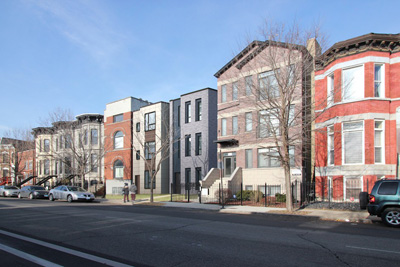 Off-site production of modular of apartments, pods of bathrooms for hospitals and a number of “production line” construction techniques are once again showing up in some interesting places and being used by some traditional builders. This production technique, borrowed from the modular unit or trailer home manufacturers, is being used to address the growing need for smaller living units delivered faster in non-traditional ways at lower prices all in an era of a shortage of skilled craft workers.
Off-site production of modular of apartments, pods of bathrooms for hospitals and a number of “production line” construction techniques are once again showing up in some interesting places and being used by some traditional builders. This production technique, borrowed from the modular unit or trailer home manufacturers, is being used to address the growing need for smaller living units delivered faster in non-traditional ways at lower prices all in an era of a shortage of skilled craft workers.
The demand for close-in living units for millennials and a booming economy have made it possible to once again try this decade's old technique. In Chicago, where infill and “affordable housing” “start-up” firms are sprouting and looking for investment funds. According to an article in CityLab, “Skender, an established, family-owned builder in Chicago, is making a serious play” to integrate new techniques to change the way the industry builds.
According to the article, “The company is building steel-structured three-flats, a quintessential Chicago housing type that consists of three apartments stacked on top of each other in the footprint of a large house.”
To do that, Skender has developed a 100,000 square-foot warehouse that contains a production line for the assembly of the “steel-structured” flats that can be stacked together on existing lots as new housing. The manufacturing line, currently manned by humans working their craft using high-tech screens and construction apps to show the process can, according to the company, build the “three flat” units in 90 days instead of 9 months for a traditional build. When the manufactured units leave the “factory” they are “95% complete and are trucked to the site for finishing."
One additional advantage of this approach, especially in Chicago, is that the units can be built efficiently without worrying about the Chicago weather interfering with the process. Once built in the “factory,” the units are moved to the site and stacked to complete the process.
According to Stacy Scopano, Skender’s chief technology officer, the company expects to “..install some automated welding {robots} by the end of the year.” This move will improve the efficiency of the process and hopefully reduce the build time and the attendant cost.
As the shortage of skilled workers continues and the demand for units grows, you can expect that more modular production will be tried across the country.


